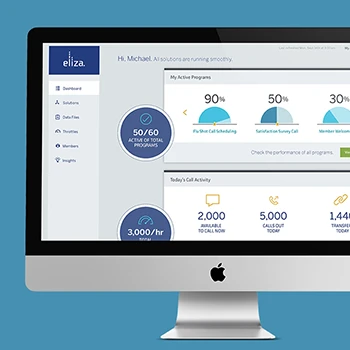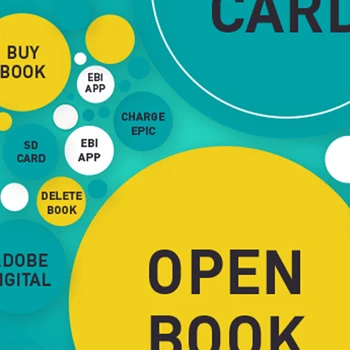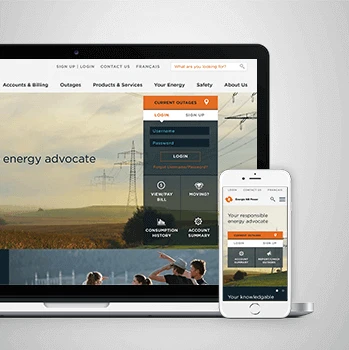What design capabilities should we expect from experienced UX designers?
Experienced UX designers bring comprehensive skills across interaction design, information architecture, visual design, and prototyping. They understand how to translate user research into creative design solutions that address business objectives while maintaining user-centered focus. Our Akendi-trained designers are certified in Experience Thinking methodology and can work across brand, content, product, and service design areas.
Tip: Evaluate designers based on their portfolio showing complete design processes rather than just final visual outcomes to understand their strategic thinking capabilities.
How do you assess interaction design and wireframing expertise?
Interaction design expertise includes understanding user requirements, applying proven design patterns, knowledge of design principles like Fitts' Law, and creating wireframes that capture effective user flows. Strong designers can translate user stories into screen flows, design task-oriented interactions, and create lightweight prototypes for testing before development begins.
Tip: Ask to see wireframes and interaction flows from previous projects to understand how designers think through user task completion and navigation patterns.
What information architecture skills are essential for complex products?
Information architecture requires understanding how users structure and categorize information, creating logical content hierarchies, and designing findable experiences. Essential skills include card sorting research, controlled vocabularies, metadata design, and validation testing. Designers should understand both top-down strategic approaches and bottom-up user-driven structures.
Tip: Test information architecture thinking by discussing how they would approach organizing complex content domains relevant to your industry or product type.
How important is visual design skill within UX design?
Visual design adds emotional connection and brand alignment to functional interactions. It includes typography, color theory, layout principles, iconography, and data visualization skills. Visual design should manifest brand experience through product interfaces while maintaining usability. The goal is creating experiences that are both functional and emotionally engaging for users.
Tip: Look for designers who can articulate the strategic reasoning behind visual choices rather than just aesthetic preferences to ensure design decisions support business objectives.
What prototyping and testing skills should designers have?
Prototyping skills range from paper sketches to interactive digital prototypes using various fidelity levels appropriate to testing needs. Designers should understand when to use different prototype types, how to facilitate usability walkthroughs, and how to integrate testing feedback into design iterations. Experience with multiple prototyping tools and methods is essential.
Tip: Ask about specific prototyping tools and methods designers use, but focus more on their ability to choose appropriate fidelity levels for different testing objectives.
How do designers integrate with development and ensure design quality?
Design integration requires creating detailed specifications, annotated wireframes, design systems, and style guides that enable accurate implementation. Designers should provide ongoing support during development, conduct design reviews, and maintain quality standards throughout the build process. Understanding technical constraints helps create realistic, implementable designs.
Tip: Inquire about designers' experience working within your specific technology constraints and development methodology to ensure smooth collaboration.
What specialized skills do designers need for different platforms?
Platform-specific design requires understanding interaction patterns, technical capabilities, and user expectations for web, mobile, voice, or emerging interfaces. Designers should adapt core UX principles to platform constraints while maintaining experience consistency. Knowledge of platform guidelines, accessibility requirements, and performance considerations is essential.
Tip: Ensure designers have hands-on experience with your primary platforms rather than just theoretical knowledge of platform differences.
How do UX designers approach the complete design process?
The design process typically includes discovery, strategy, design, and validation phases. Designers begin with user research insights, develop strategic approaches, create iterative designs through wireframing and prototyping, then validate solutions through testing. The process is iterative with feedback loops ensuring user needs and business objectives are met throughout development.
Tip: Look for designers who can articulate their design process and adapt it to your specific project constraints and timeline requirements.
What's the relationship between UX design and Experience Thinking?
Experience Thinking expands UX design beyond individual product interfaces to include brand, content, product, and service experience coordination. Designers using this approach ensure their product designs align with brand promise, content strategy, and service delivery. This creates cohesive experiences across all touchpoints rather than optimized but disconnected interactions.
Tip: Ask how designers consider brand consistency and service implications when creating product interfaces to understand their holistic experience perspective.
How do designers balance user needs with business requirements?
Effective designers understand that user needs and business objectives should align rather than compete. They use research insights to identify solutions that serve both user goals and business metrics. This requires understanding business models, success metrics, and technical constraints while maintaining user advocacy throughout the design process.
Tip: Discuss specific examples where designers navigated conflicting requirements to understand their problem-solving approach and business acumen.
What's the designer's role in design systems and consistency?
Designers contribute to design systems by creating reusable components, documenting patterns, and ensuring consistency across different product areas. They should understand when to follow established patterns versus when to create new solutions. Design system work includes both contributing components and maintaining design quality as systems evolve.
Tip: Evaluate designers' experience with design systems relevant to your organization's scale and complexity rather than just general design system knowledge.
How do designers handle iteration and feedback incorporation?
Design iteration involves systematic feedback collection, analysis, and solution refinement. Designers should manage stakeholder input, user testing results, and technical feedback while maintaining design integrity. Effective iteration requires balancing multiple perspectives while keeping user needs central to design decisions.
Tip: Ask about specific examples of how designers handled conflicting feedback or significant design changes to understand their collaboration and adaptation skills.
What's the designer's approach to accessibility and inclusive design?
Accessible design requires understanding diverse user capabilities, technical accessibility standards, and inclusive design principles. Designers should consider physical abilities, cognitive differences, and technological access when creating solutions. Accessibility should be integrated throughout the design process rather than added as an afterthought.
Tip: Inquire about specific accessibility guidelines and testing methods designers use to ensure their commitment goes beyond basic compliance to genuine inclusive design.
How do designers measure and validate design success?
Design validation includes usability testing, analytics analysis, and business metric tracking. Designers should establish success criteria, conduct appropriate testing methods, and interpret results to guide design improvements. Validation approaches vary based on project goals, timeline, and available resources.
Tip: Ask how designers would measure success for your specific product or service to understand their ability to align design metrics with business objectives.
How do designers contribute to product strategy and vision?
Strategic designers help shape product direction through user insight analysis, competitive assessment, and opportunity identification. They translate business goals into experience strategies and identify design solutions that create competitive advantage. Strategic contribution requires understanding market context, user needs, and business model implications of design decisions.
Tip: Look for designers who can discuss how their design decisions influenced product strategy or business outcomes rather than just describing tactical design execution.
What's the designer's role in innovation and creative problem-solving?
Innovation in design involves identifying new interaction possibilities, exploring emerging technologies, and creating novel solutions to user problems. Designers should balance creative exploration with practical implementation, using techniques like design sprints, sketching, and rapid prototyping to explore possibilities before committing to solutions.
Tip: Ask about specific examples where designers introduced innovative solutions or challenged conventional approaches to understand their creative problem-solving capabilities.
How do designers approach competitive analysis and market positioning?
Design competitive analysis examines user experience quality, interaction patterns, and strategic positioning rather than just feature comparison. Designers should identify differentiation opportunities, understand market standards, and position your product experience for competitive advantage while maintaining user focus.
Tip: Request examples of competitive analysis that led to specific design decisions to understand how designers translate market insights into design strategy.
What's the designer's approach to experience lifecycle and user journey design?
Lifecycle design considers the complete user relationship from awareness through advocacy, ensuring consistent experience quality across all touchpoints and interaction phases. Designers map current state journeys, identify improvement opportunities, and design connected experiences that support user progression through different relationship stages.
Tip: Discuss how designers would approach journey design for your specific customer lifecycle to understand their ability to think beyond individual feature design.
How do designers handle design for different user segments and personas?
Multi-segment design requires understanding different user motivations, capabilities, and contexts while maintaining design coherence. Designers should create flexible solutions that accommodate various user types without creating complexity or confusion. This includes designing for different experience levels, domain knowledge, and usage patterns.
Tip: Ask how designers would handle conflicting needs between your most important user segments to understand their approach to design tradeoffs and prioritization.
What's the designer's methodology for persuasive design and user engagement?
Persuasive design uses psychological principles and behavioral insights to guide user actions while maintaining ethical standards. Designers should understand motivation, decision-making patterns, and engagement strategies that support both user goals and business objectives. This includes designing for habit formation, commitment, and sustained engagement.
Tip: Inquire about specific persuasive design techniques and how designers ensure ethical application to understand their approach to influencing user behavior.
How do designers plan for scalability and future evolution?
Scalable design creates foundations that accommodate growth, new features, and changing requirements without fundamental redesign. Designers should anticipate future needs, create flexible architectures, and design systems that enable evolution. This includes considering technical scalability, content growth, and user base expansion.
Tip: Ask how designers would approach creating scalable solutions for your anticipated growth or change scenarios to understand their forward-thinking capabilities.
How do UX designers collaborate with product managers and stakeholders?
Designer-stakeholder collaboration involves translating business requirements into user experience solutions, communicating design rationale, and managing feedback from multiple perspectives. Designers should facilitate design reviews, present concepts effectively, and build consensus around design directions while maintaining user-centered focus throughout decision-making processes.
Tip: Ask about specific collaboration examples where designers successfully managed competing stakeholder priorities to understand their communication and negotiation skills.
What's the designer's approach to working with developers and ensuring implementability?
Designer-developer collaboration requires understanding technical constraints, creating implementable specifications, and supporting development throughout the build process. Designers should provide clear documentation, be available for clarification, and conduct regular design reviews to maintain quality standards during implementation.
Tip: Inquire about designers' experience with your specific development technologies and methodologies to ensure smooth collaboration and realistic design expectations.
How do designers facilitate design workshops and collaborative sessions?
Design facilitation includes planning structured workshops, guiding stakeholder participation, and synthesizing diverse input into actionable design directions. Designers should use appropriate facilitation techniques, manage group dynamics, and ensure productive outcomes from collaborative sessions while maintaining design quality and user focus.
Tip: Ask about specific workshop formats and facilitation approaches designers use to understand their ability to lead collaborative design processes effectively.
What's the designer's role in cross-functional team communication?
Cross-functional communication requires translating design concepts for different audiences, adapting presentation formats to stakeholder needs, and maintaining design consistency across different team functions. Designers should communicate design rationale clearly and build understanding of user experience value across the organization.
Tip: Test communication skills by asking designers to explain a complex design decision in terms relevant to your specific business context and stakeholder types.
How do designers handle feedback and critique processes?
Design critique involves giving and receiving constructive feedback, managing subjective opinions, and distinguishing between user needs and stakeholder preferences. Designers should facilitate productive critique sessions, incorporate valuable feedback while maintaining design integrity, and educate stakeholders about user-centered design principles.
Tip: Ask how designers typically structure critique sessions and handle disagreements about design directions to understand their approach to managing design feedback.
What's the designer's approach to client or customer involvement in design?
Customer involvement includes participatory design methods, user testing facilitation, and incorporating customer insights into design decisions. Designers should know when to involve users directly, how to manage customer feedback, and how to balance user input with design expertise to create optimal solutions.
Tip: Inquire about specific methods designers use to involve customers in design processes and how they handle situations where customer requests conflict with user needs.
How do designers build internal design capabilities and knowledge transfer?
Capability building involves sharing design knowledge, mentoring internal professionals, and creating processes that enable continued design success. Designers should document their approach, provide training when needed, and establish systems that support ongoing design quality even after their engagement ends.
Tip: Ask about specific examples of knowledge transfer and capability building to understand designers' commitment to long-term organizational design success.
What design tools and software should experienced designers know?
Tool proficiency includes industry-standard design software like Figma, Sketch, Adobe Creative Suite, prototyping tools, and collaboration platforms. However, tool knowledge should be secondary to design thinking and problem-solving capabilities. Designers should choose appropriate tools based on project needs rather than defaulting to familiar software.
Tip: Focus on designers' ability to choose appropriate tools for specific project needs rather than just their familiarity with the latest design software.
How do designers approach prototyping tool selection and fidelity decisions?
Prototyping decisions involve choosing appropriate fidelity levels, interaction complexity, and tool capabilities based on testing objectives and audience needs. Designers should understand when to use paper sketches, digital wireframes, or high-fidelity interactive prototypes to communicate design concepts and validate user experience effectively.
Tip: Ask designers to explain their prototyping approach for a specific scenario relevant to your project to understand their strategic thinking about fidelity and tool selection.
What's the designer's methodology for design documentation and handoff?
Design documentation includes specifications, style guides, interaction notes, and asset preparation that enable accurate implementation. Designers should create clear, actionable documentation that reduces ambiguity and supports development workflow. Documentation should be appropriate to project complexity and team needs.
Tip: Review examples of design documentation from previous projects to understand how thoroughly designers communicate their design intentions to development teams.
How do designers use analytics and data to inform design decisions?
Data-informed design involves interpreting user behavior analytics, conversion metrics, and performance data to identify improvement opportunities and validate design changes. Designers should understand which metrics matter for different design goals and how to combine quantitative data with qualitative insights for comprehensive understanding.
Tip: Ask how designers would approach analyzing your specific business metrics and user data to understand their ability to connect design decisions to measurable outcomes.
What's the designer's approach to version control and design system management?
Design version control involves maintaining design file organization, tracking changes, and coordinating with team members to ensure everyone works with current designs. Design system management includes component maintenance, documentation updates, and ensuring consistent application across different projects and team members.
Tip: Inquire about specific workflows and tools designers use for file management and collaboration to ensure compatibility with your team's working methods.
How do designers handle remote collaboration and presentation tools?
Remote design collaboration requires proficiency with video conferencing, screen sharing, collaborative design platforms, and presentation tools that enable effective communication with distributed stakeholders. Designers should adapt their communication and feedback processes for remote environments while maintaining design quality and collaboration effectiveness.
Tip: Test remote collaboration capabilities by conducting part of the interview process through remote design review or collaborative session to understand practical working capabilities.
What's the designer's experience with emerging design technologies and AI tools?
Emerging technology adoption includes understanding AI-assisted design tools, voice interface design, AR/VR prototyping, and automated design system generation. Designers should evaluate new technologies for appropriate application while maintaining design quality and user focus. The goal is using technology to enhance design capabilities rather than replace design thinking.
Tip: Ask about specific emerging technologies relevant to your industry or product roadmap to understand designers' adaptability and technology assessment capabilities.
How do you evaluate the quality and effectiveness of UX design work?
Design quality assessment includes usability evaluation, aesthetic judgment, business impact measurement, and user satisfaction analysis. Quality designers create solutions that are functional, beautiful, and strategically aligned. Evaluation should consider both immediate usability and long-term experience impact across the complete user lifecycle.
Tip: Ask designers to walk through their quality assurance process and how they validate that their designs meet both user needs and business objectives.
What's the designer's approach to maintaining consistency while allowing innovation?
Design consistency requires balancing adherence to established patterns with opportunities for creative solutions and experience improvements. Designers should understand when to follow conventions versus when to innovate, ensuring that changes enhance rather than confuse user experience while maintaining overall design coherence.
Tip: Discuss examples where designers successfully introduced new patterns or challenged existing conventions to understand their judgment about consistency versus innovation.
How do designers ensure designs work across different devices and contexts?
Cross-device design requires understanding responsive principles, platform-specific patterns, and contextual usage variations. Designers should create solutions that maintain experience quality across different screen sizes, input methods, and usage contexts while respecting platform conventions and technical capabilities.
Tip: Ask how designers approach testing and validation across different devices and contexts to understand their practical approach to responsive and adaptive design.
What's the designer's methodology for error prevention and recovery design?
Error handling design includes preventing user mistakes through clear affordances, providing helpful error messages, and designing recovery paths that minimize user frustration. Designers should anticipate failure modes, design appropriate feedback, and create resilient experiences that handle edge cases gracefully.
Tip: Ask about specific examples of error handling or edge case design to understand how thoroughly designers consider failure scenarios and user recovery.
How do designers address performance and loading considerations in their designs?
Performance-conscious design involves understanding loading patterns, optimizing content hierarchy, and designing experiences that work well even with slow connections or processing constraints. Designers should consider technical performance implications of their design choices and create solutions that degrade gracefully under different conditions.
Tip: Inquire about how designers balance visual richness with performance requirements to understand their practical approach to design constraints.
What's the designer's approach to internationalization and localization?
Global design requires understanding cultural differences, language expansion factors, reading patterns, and local conventions that affect user experience. Designers should create flexible layouts, consider text expansion, understand cultural color meanings, and design experiences that work across different cultural contexts.
Tip: Ask about specific internationalization challenges and solutions relevant to your target markets to understand designers' global design experience and cultural awareness.
How do designers handle design debt and legacy system constraints?
Design debt management involves identifying inconsistencies, prioritizing improvements, and creating upgrade paths that balance immediate needs with long-term design quality. Designers should work within legacy constraints while planning for systematic improvements that enhance overall experience quality over time.
Tip: Discuss specific examples of how designers approached legacy system improvements to understand their ability to work within existing constraints while driving quality improvements.
How are AI tools transforming UX design processes and capabilities?
AI integration in UX design includes automated wireframe generation, design pattern suggestions, accessibility checking, and content generation for prototypes. AI tools accelerate design exploration, automate routine tasks, and provide design suggestions while human designers focus on strategy, user empathy, and creative problem-solving. The goal is augmenting human capabilities rather than replacing design judgment.
Tip: Ask designers about their experience with specific AI design tools and how they balance AI assistance with human creative judgment to ensure strategic design thinking.
What's the designer's approach to designing AI-powered user interfaces?
AI interface design requires understanding machine learning capabilities, designing for uncertainty and progressive disclosure, and creating interfaces that help users understand AI behavior. Designers should consider AI confidence levels, explanation needs, and fallback scenarios while maintaining user control and comprehension throughout AI interactions.
Tip: Inquire about specific AI interface challenges and design patterns relevant to your product to understand designers' experience with AI-human interaction design.
How do designers ensure ethical AI implementation in user experience?
Ethical AI design involves transparency about AI involvement, user consent for data usage, avoiding manipulative patterns, and ensuring AI serves user needs rather than just business metrics. Designers should understand bias implications, privacy concerns, and user agency requirements when creating AI-enhanced experiences.
Tip: Ask about specific examples of ethical considerations in AI design to understand designers' awareness of responsible AI implementation in user experience.
What's the designer's methodology for testing and validating AI-enhanced experiences?
AI experience testing requires different approaches including edge case scenario testing, AI accuracy validation, user comprehension assessment, and long-term behavior pattern analysis. Designers should understand how to test unpredictable AI behavior, validate user mental models of AI capabilities, and ensure consistent experience quality.
Tip: Ask how designers would approach testing AI features specific to your domain to understand their practical experience with AI user experience validation.
How do designers balance AI automation with user control and agency?
User agency in AI systems requires designing appropriate automation levels, providing override capabilities, and maintaining user understanding of system behavior. Designers should create experiences where AI assistance enhances rather than replaces user decision-making while providing transparency about AI involvement and limitations.
Tip: Discuss specific scenarios where designers would give users control versus automate decisions to understand their approach to human-AI interaction balance.
What's the designer's approach to personalization and adaptive interfaces?
Adaptive design involves creating interfaces that learn from user behavior, adjust to preferences, and provide personalized experiences without becoming unpredictable or confusing. Designers should understand personalization algorithms, design for different adaptation levels, and ensure users can understand and control adaptive behavior.
Tip: Ask about specific personalization design challenges and solutions to understand designers' experience with adaptive interface design and user preference management.
How do designers approach conversational interfaces and natural language interaction?
Conversational design requires understanding natural language patterns, designing for ambiguity and misunderstanding, and creating helpful dialogue flows that guide users toward successful outcomes. Designers should consider conversation context, error recovery, and the relationship between voice, text, and visual interface elements.
Tip: Inquire about specific conversational interface projects or challenges to understand designers' experience with natural language interaction design and multi-modal experiences.












